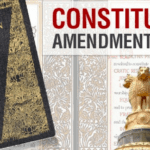
Democracies use the doctrine of separation of powers to prevent conflict between the various branches of the government. The United States, for example, follows Montesquieu’s dictum and maintains a strict separation of powers between these three organs, namely the legislature, executive, and judiciary. The second model is a looser separation, or the Westminster model, which is based on the principle of Parliamentary supremacy, such as in the United Kingdom.
The Indian Constitution offers a third model of power separation. While the State recognizes legislative, executive, and judicial bodies, it does not expressly vest the various types of power in them nor specify the nature of functions they should perform.
The following provisions of the Constitution demonstrate the functional overlap of various government organs :
- The number of Supreme Court judges to be appointed is decided by Parliament, which also has the authority to impeach and dismiss Supreme Court and High Court judges.
- Terms and conditions of service, including judicial salaries, are also governed by legislation.
- Although Parliament has legislative power, the executive (ministers) predominates the legislative process because bills are largely introduced by the executive in Parliament or state legislatures.
- Parliament, through ‘delegated legislation,’ empowers the executive to make laws where legislature is unable to do so.
- Several provisions grant the executive judicial powers. For example, it has the authority (in the name of the President) to determine whether a member of a House of Parliament is no longer qualified to serve.
- The executive also staffs administrative tribunals established under Article 323A as well as other tribunals established under Article 323B to carry out functions previously performed by courts.
- The Supreme Court held in Kesavananda Bharati that the power to amend the Constitution under Article 368 did not extend to amending the ‘basic structure’ of the Constitution. In this way, the Court keeps ‘legislative extremism’ under control.
- Under the writ of mandamus, the courts order a public official, public body, corporation, subordinate courts, tribunals, or government to perform their duties.
To prevent any organ from exercising too much power, the constitution organizes the powers of governance in different organs in an overlapping fashion to create a structure of checks and balances. The delicate balancing of powers among legislature, executive, and judiciary was a result of India’s unique social, economic, and political situation, and the structure established in this manner continues to serve our purposes effectively to this day.
Other related articles:
THE AMENDMENT OF THE CONSTITUTION: ARTICLE 368
THE INDIAN CONSTITUTION IS FEDERAL IN FORM BUT UNITARY IN SPIRIT



